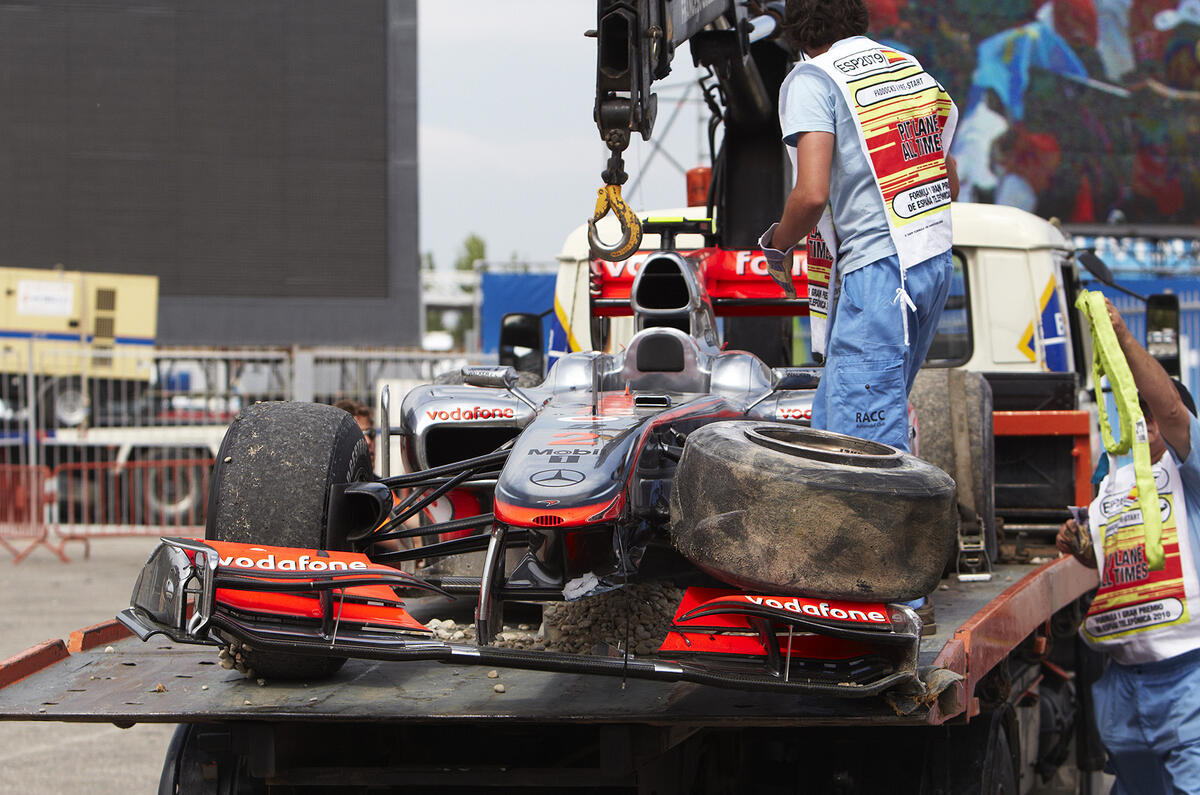Lewis Hamilton's penultimate-lap crash at last weekend's Spanish Grand Prix was caused by a wheel rim failure, his McLaren team has confirmed.
"The analysis of the part came back and, as we said at the time, we did not believe that the deflation was caused by a puncture or a tyre failure in that all the evidence told us that the rim failed, which caused the deflation," said McLaren team principal Martin Whitmarsh.
"The rim failure is being investigated. It could be debris-related, it could be that a lack of tightness of the wheelnut allowed some flexing. What we know is that the rim failed, probably a human error somewhere in the process to cause it, and that led to the deflation and the accident."
Hamilton was set for a comfortable second place in the race, but crashed when the rim failure caused his left-front tyre to deflate and sent him across the gravel and into the tyre wall.
Team principal Martin Whitmarsh said that the cause of the rim failure had yet to be determined though, and that an investigation remains ongoing.




Join the debate
Add your comment
Re: Hamilton's wheel rim failed
Oh dear, yawn. I'm sure he will get over it.
Re: Hamilton's wheel rim failed
Pardon me for asking this, who knows more about F1 racing cars?, yes exactly, i'd tend to believe the blokes who work on these cars for a living.
Re: Hamilton's wheel rim failed
It was not a "spring" that hit Massa - the Brawn in question (Baricello's) finished the race.
Mass dampers, in their original incarnation, were banned because the FIA somehow judged them to be "movable aerodynamic devices" (for the not very convincing reason that they kept the front wing ride-height stable). They came back in the form of inertia (rather than pure mass) stabilizers: a secondary push or pull rod spinning a cylinder, the inertia of which then provided a damping effect. It was one of these cylinders that hit Massa and injured him.